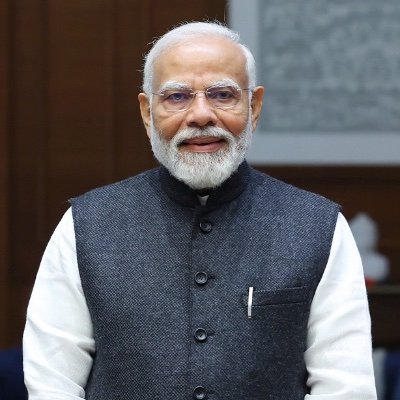Introduction
Nirmala Sitharaman, India’s Union Minister of Finance and Corporate Affairs, stands as one of the most influential figures in contemporary Indian politics. Her unerring intellect
and calm character and policy skill have allowed Sitharaman to break through barriers that existed in the male-dominated political sphere. Her professional story demonstrates her
enduring commitment to the nation and her ability to lead India through economic crisis and become its first female full time Defense Ministe Nirmala Sitharamanr. The article
explores her life history along with her professional achievements and policy accomplishments and ongoing heritage development.

Early Life and Education
On August 18, 1959 Nirmala Sitharaman entered the world in Madurai Tamil Nadu where she came from a Tamil Brahmin family with middle-class background. Narayanan Sitharaman
worked for Indian Railways during his career and Savitri spent her life taking care of the home. During her childhood years Sitharaman spent her time in a cultural setting that nurtured her passion for classical dance and literature.
Seethalakshmi Ramaswami College in Tiruchirappalli became her first academic institution for completing an undergraduate degree in Economics.
She then continued her studies to earn her Master’s in Economics from Jawaharlal Nehru University (JNU) located in New Delhi which became
famous for its intellectual discussions. She encountered her future husband Parakala Prabhakar at the political economic department of Jawaharlal Nehru University while studying there with him.
The marriage between the couple took place in 1986 and they welcomed their daughter Vangmayi.

Seethalakshmi Ramaswami College in Tiruchirappalli became her first academic institution for completing an undergraduate degree in Economics. She then continued her
studies to earn her Master’s in Economics from Jawaharlal Nehru University (JNU) located in New Delhi which became famous for its intellectual discussions.Nirmala Sitharaman She encountered her
future husband Parakala Prabhakar at the political economic department of Jawaharlal Nehru University while studying there with him. The marriage between the couple took place in 1986 and they welcomed their daughter Vangmayi.
Pre-Political Career: From Corporate World to Advocacy
Sitharaman established a successful professional career across academia and corporate business before joining politics. She dedicated short periods to teaching at the London School of Economics before leading Price
Waterhouse in the UK as a senior manager. In the early 1990s she came back to India to support the creation of a school in Hyderabad before taking the role of Deputy Director at the Centre for Public Policy Studies.
She started her advocacy at the National Commission for Women (NCW) before moving into politics. Through work in the National Commission for Women she developed essential abilities to handle bureaucracy and societal obstacles which became vital assets for her future political service.
Entry into Politics: The BJP Journey
Nirmala Sitharaman The political beliefs of Sitharaman formed as she participated with Rashtriya Swayamsevak Sangh (RSS) before she joined Bharatiya Janata Party (BJP).
In 2006 the politician officially joined the BJP utilizing her financial expertise for drafting party platform statements.
Sushma Swaraj received her breakthrough opportunity in 2010 when she became the National Spokesperson for the BJP. Through her eloquence and professionalism she served as the main representation for the party media strategy while defending its policies under UPA-II.
The BJP leadership experienced a bold yet fast ascent of her career which showcased their belief in her abilities.
Political Ascendancy: From Spokesperson to Cabinet Minister
During 2014 the NDA government under BJP control took office and appointed Sitharaman as Minister of State (MoS) for Commerce and Industry. The main priorities of her time in office centered on export development and trade regulation
streamlining as well as the support of the “Make in India” initiative. She took a leading part in creating the National Intellectual Property Rights Policy (2016) to promote innovation.
Her professional achievements led to her appointment as India’s first female Defence Minister in the Cabinet during 2017.Nirmala Sitharaman In her position as head of the world’s second-biggest military she initiated modernization programs while focusing
on military transparency and service-wide welfare initiatives. The defense minister implemented two major programs through the Strategic Partnership Model for domestic defense manufacturing and by introducing the One Rank One Pension system.
Ministerial Tenure: Defence (2017–2019)
Nirmala Sitharaman The position of Defence Minister brought complex challenges to Nirmala Sitharaman including dealing with border terrorist activities and financial resource
limitations. The minister led surgical assaults after the Uri and Balakot operations while making it clear that India would not tolerate terrorist activity.

During her administration Prime Minister Modi secured the ₹59,000-crore Rafale fighter jet agreement with France despite facing political opposition. Nirmala Sitharaman defended the agreement even though critics pointed out possible
procedural flaws by arguing it was necessary for national defense. During her term she dedicated her efforts to achieving gender equality by approving women to fight in combat roles while boosting their numbers within military educational institutions.
Ministerial Tenure: Finance (2019–Present)
Nirmala Sitharaman received the Finance Minister post in 2019 which made her the second female minister after Indira Gandhi to hold this position.
Sitharaman assumed office when GDP growth rates declined while agricultural sectors were struggling and the COVID-19 pandemic started.
Key Policies and Reforms
1: The government cut corporate income taxes to 22% through corporate Tax Cuts in 2019 while keeping the previous rate at 30%.
2: The government launched Aatmanirbhar Bharat (2020) as a ₹20-lakh-crore plan to restore economic activity after COVID-19 which targeted MSMEs together with agriculture and infrastructure development.
3: The government has initiated the sale of BPCL, Air India, and LIC to reduce fiscal deficit amounts.
4: Digital India Boost: Promotion of fintech, UPI, and digital public infrastructure.
5: Green Economy Initiatives: Launch of green bonds and schemes for renewable energy.
Challenges
- * The pandemic management approach faced criticism because epidemic relief packages supported corporate entities disproportionately over vulnerable citizen groups.
- * Nirmala Sitharaman Farmers’ protests concerning the farm laws forced Modi to demonstrate his crisis preparedness abilities which led to the repeal of the laws.
- * The global supply chain disruptions together with the increasing inflation rate at 6.7% in 2022 proved to be enduring issues.
- Sitharaman demonstrated prudent fiscal management while the GDP of India grew by 7.2% in FY 2023. The budgets under her leadership placed emphasis on expenditure for capital projects and social programs while pushing technological advancements.
- Personal Life and Public Persona
The disciplined lifestyle of Sitharaman shows itself through her personal choices. She makes a reputation through her traditional kanjeevaram sarees combined with her basic
lifestyle approach which includes cycling to her workplace. Her love of reading includes Tamil literature and economic journals which she uses as mental fuel.
Her calm yet forceful communication manner creates admiration from both sides of the political aisle. People at her workplace characterize her as someone who works excessively long hours while maintaining close attention to details.
Legacy and Impact
The economic governance legacy of Nirmala Sitharaman consists of transparent and inclusive financial management. The government under her guidance prioritizes economic growth through sustained development over short-term
gains through populist measures and executes major digitalization strategies and enhances infrastructure development. She has motivated numerous people as a female leader by demonstrating that capability can overcome the constraints of gender.
Table of Contents

Conclusion
The financial leadership of India by Nirmala Sitharaman showcases both her persistence and foresight which emerged from her middle-class background. Her skill to handle emergencies with a practical approach has made her
a vital player in shaping India’s future development. Reforms take more than just a single day according to her repeated statement because they need continuous commitment. Modern global uncertainty requires India to maintain Sitharaman’s steady financial leadership for national ambitions.


